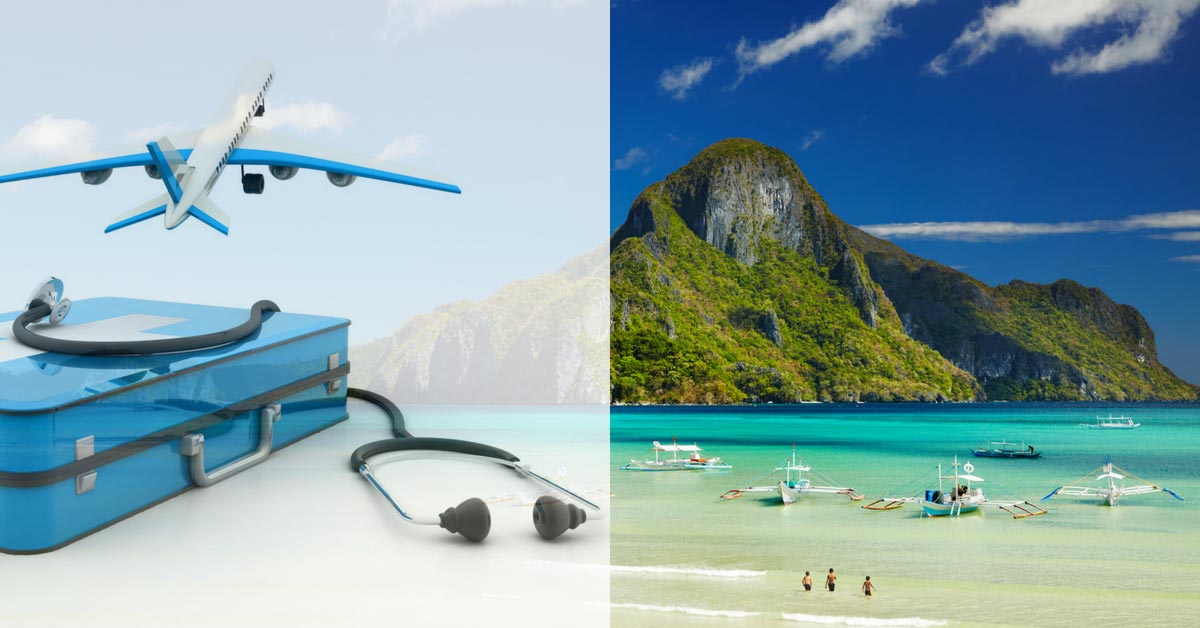
The Philippines is one of the top travel destinations in Southeast Asia, but it’s also fast becoming one of the top destinations in the world for medical tourists.
Ranked 8th in the world for being a top medical tourism destination, Philippines caters to about 250,000 foreign patients or clients each year. According to a 2015 list compiled by global non-profit association for medical tourism and international patient industry, the International Healthcare Research Center and Medical Tourism Association, the Philippines garnered the 8th spot based on providing the most suitable healthcare cost, culture, security, and quality in terms of medical healthcare.
As early as 2006, the Philippines had begun its push to promote medical tourism in the country thanks to a bill that was passed in the Philippine Congress. Three branches of the country, which are the DOH (Department of Health), DOT (Department of Tourism), and the DTI-BOI (Department of Trade and Industry – Board of Investments) worked together to create a roadmap that would put the country on the global map for medical tourism.
Their efforts have been fruitful with the country being one of the top destinations for medical tourism today.
Aside from the efforts of the government, as well as the private institutions, general factors that have contributed to the rise of medical tourism in the Philippines include:
- the Filipinos’ innate nature of being warm and hospitable;
- English as a second language of use in the country and the general public being able to speak the global language;
- the tropical climate that promotes healing and relaxation after procedures;
- the highly trained medical practitioners with many of them having had trained or studied internationally;
- state of the art medical equipment;
- and of course, the lower costs as compared to Western nations.
What are the Common Treatments Done?
Most foreign patients who go to the Philippines to do aesthetic and non-complicated procedures. The most common treatments done include procedures under the following:
- dentistry
- cosmetic surgery
- aesthetic surgery
- weight loss surgery
- rehabilitation
- stem cell therapy
- eye surgery and ophthalmology
- fertility treatments
- dermatology
How Much Do Medical Treatments Cost in the Philippines?
One of the most attractive features that draw foreigners to the Philippine health system is the significantly lower cost of procedures, as well as lower costs of accommodation as compared to other top medical tourism destinations.
Here are some examples of medical procedures cost in the US, and how they compare to the prices in the Philippines:
Liver Transplant – May cost between $290,000 to $310,000 in the US, only costs between $120,000 to $150,000 in the Philippines. That makes about 51% to 58% in savings.
Kidney Transplant – May cost between $200,000 to $250,000 in the US, only costs between $23,000 to $25,000 in the Philippines. That makes about 88% to 90% in savings.
Coronary Artery Bypass Surgery – May cost between $70,000 to $133,000 in the US, only costs between $11,500 to $17,500 in the Philippines. That makes about 83 to 86% in savings.
Breast Augmentation – This procedure may cost between $7,500 to $8,500 in the US, but breast augmentation in the Philippines only costs between $3,000 to $3,500. That makes about 58% to 60% in savings.
These are just some comparisons of cost between the country’s prices in terms of procedures. As you can see, significantly lesser costs are offered in the Philippines, making it an attractive alternative for many patients or clients who may not have the financial capacity to carry on such procedures in their home country.
Other patients or clients also opt to have their medical procedures done in the Philippines so they could travel at the same time. Along with low medical costs, the Philippines is a top travel destination with a tropical climate, which is perfect for anyone who wishes to heal and relax right after their surgery or procedures.
Malpractice and Liabilities
The country’s constitution has enough laws to ensure the safety and security of patients and clients at the hands of practitioners and hospitals. There are also adequate provisions in the Penal Code for medical malpractice. These laws and provisions make sure patients and medical clients are protected against negligence and incompetence from medical practitioners.
Advantages and Disadvantages
Advantages
- Lower cost
- Affordable prices for accommodation – 5-star hotels cost less in the Philippines compared to other medical tourism destinations
- High quality of hospitals and practitioners – with 5 internationally accredited hospitals all in one region (Metro Manila)
- The general population in the country speaks English
Disadvantages
- Long flights – for those who live in Canada, the US, and Europe. Some patients or clients may not be comfortable traveling for more than a few hours due to their medical condition.
- Lack of research facilities – most practitioners have to study or train internationally to be able to acquire the necessary skills for certain expertise, which means mentors and pioneers of procedures are lacking in the country.
One may not think of the Philippines as the top destination for medical treatments but recent surveys and reports will make you think otherwise. With 5 internationally accredited hospitals, top notch medical practitioners with Western education and training, state of the art medical equipment, and topping it all off with the friendly, warm, and gentle nature of Filipinos, it’s no surprise the Philippines has become indeed one of the top destinations in the world for medical tourism.
The Healthcare System in the Philippines
There’s not much to say about the public healthcare system in the Philippines, except for the fact that it is indeed one of the lowest quality in the region. Its private healthcare system, however, is on a completely different level.
In fact, the country has a total of 5 internationally accredited hospitals, which are: The Medical City, Makati Medical Center, Asian Hospital and Medical Center, St. Luke’s Medical Center in Global City, and St. Luke’s Medical Center in Quezon City. All hospitals are located in Metro Manila, and all are certified as institutions for providing excellent health care by JCI, or the Joint Commission International. JCI is an accreditation and certification body with over 100 member countries worldwide, and it also happens to be the only accreditation body for patient safety and quality healthcare.





